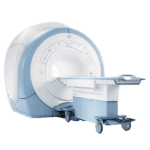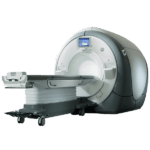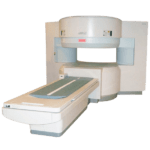Keep patients and healthcare personnel safe and avoid MRI accidents
MRI exams are often associated with imaging without radiation. Therefore, they are deemed safer than CT or plain x-ray exams. But just like any other medical procedure, precautions must be followed to keep patients and healthcare personnel safe and avoid MRI accidents.
There are over 30,000 MRI units installed worldwide with different exams being ordered for various studies. Vascular, orthopedic, and neurological studies are the most common exams ordered.
MRI units use strong magnetic fields with radio frequencies to produce images of the human anatomy. G.I. Doctors and orthopedic surgeons prefer the image quality of MRI exams for detailed studies of bony anatomy and soft tissues of major organs.
Even though MRI units don’t use radiation, safety protocols must be followed
There have been fatal accidents that involved ferromagnetic materials being brought into the MRI suite. Sadly, these accidents could have been prevented if strict safety protocols were in place.
The most recent MRI accident happened in South Korea, in the article that describes the incident, which involved an oxygen cylinder being brought into the MRI suite, the cylinder was sucked into the bore and killed the patient during the scan.
Sources state, that the patient was critically ill and could not be removed from the oxygen. However, the MRI suite should have been equipped with an oxygen line in the magnet room or at least equipped with a magnet-friendly tank in the department.
The Hazards of MRI exams
- Metallic surgical implants in patients can be dislodged
- Ferromagnetic materials can become projectiles such as paper clips, jewelry, keys, O2 tanks, IV poles, respirators, patient beds, wheelchairs etc.
- Liquid cryogens can cause severe burns to engineers if not handled properly or can leak gases in the room.
- The RF coils and gradients can heat surgical implants.
- The MRI gradients can produce noise levels over 100db that can cause hearing loss.
Get Started
Request Pricing Today!
We’re here to help! Simply fill out the form to tell us a bit about your project. We’ll contact you to set up a conversation so we can discuss how we can best meet your needs. Thank you for considering us!
Great support & services
Save time and energy
Peace of mind
Risk reduction
Avoid MRI accidents by following protocols
- All patients must be screened when they arrive for their exam. Which includes filling out detailed questionnaire and having orbital x-rays taken to rule out foreign bodies lodged in the eyes.
- Ferromagnetic materials must be kept away from the scanner. The materials can get lodged in the Magnet’s bore. Then, the MRI unit has to be shut down, called quenching the magnet to dislodge the object.
- All patients must wear headphones or ear plugs during the exam to protect the ears from loud noises of the gradients.
- Metal detectors should be installed to screen all patients before entering the magnet room.
A strong magnetic field exists even outside the MRI unit
MRI suites have detailed charts of where the magnetic field is strongest and is divided it up into zones.
Zone 1: Anywhere outside the facility including the parking lot or the vestibule inside the building. Safe for everybody including visitors, patients, and other health care team members. Ferromagnetic materials are not a threat.
Zone 2: The reception area and the changing rooms of the facility. This zone is safe for patients, visitors, and other personnel. Ferromagnetic materials aren’t a threat.
Zone 3: This is where the control and screening rooms are located. All the ferromagnetic material must be removed here. The MRI technologist usually occupy this space along with the patient.
Zone 4: The MRI suite, this is where the magnet is located. NO ferromagnetic material is allowed in this zone because it is where the highest magnetic field is located.
For more information, The American College of Radiology has developed MRI safety protocols that can be found on their own website.
MRI exams are the gold standard for low contrast images and produce detailed images of human anatomy. They are safe procedures when the necessary precautions are followed. Fatal MRI accidents rarely occur and usually involves a safety protocol not being followed.



